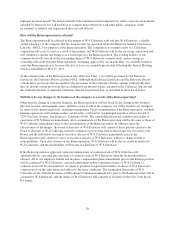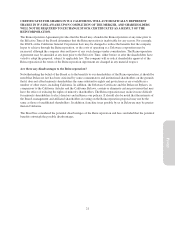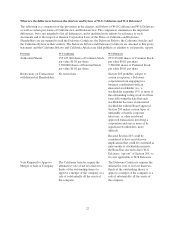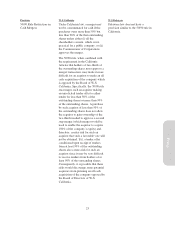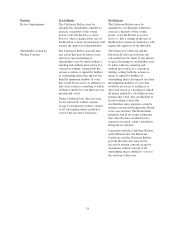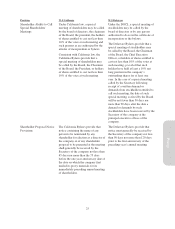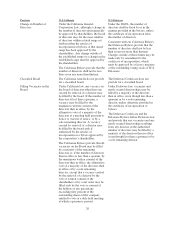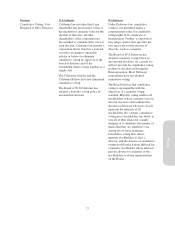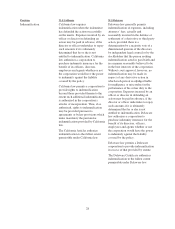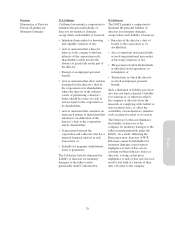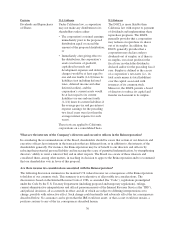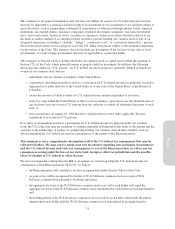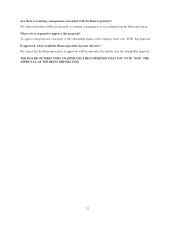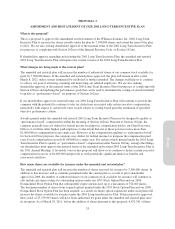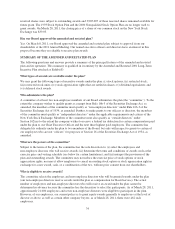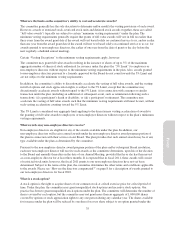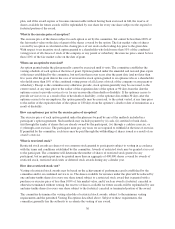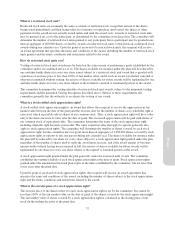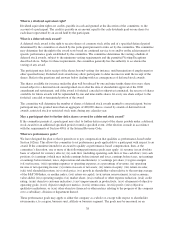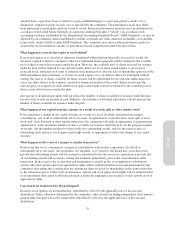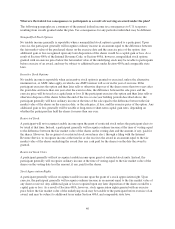Pottery Barn 2010 Annual Report Download - page 126
Download and view the complete annual report
Please find page 126 of the 2010 Pottery Barn annual report below. You can navigate through the pages in the report by either clicking on the pages listed below, or by using the keyword search tool below to find specific information within the annual report.
Provision W-S California W-S Delaware
Dividends and Repurchases
of Shares
Under California law, a corporation
may not make any distribution to its
shareholders unless either:
• The corporation’s retained earnings
immediately prior to the proposed
distribution equal or exceed the
amount of the proposed distribution;
or
• Immediately after giving effect to
the distribution, the corporation’s
assets (exclusive of goodwill,
capitalized research and
development expenses and deferred
charges) would be at least equal to
one and one fourth (1-1/4) times its
liabilities (not including deferred
taxes, deferred income and other
deferred credits), and the
corporation’s current assets would
be at least equal to its current
liabilities (or one and one fourth
(1-1/4) times its current liabilities if
the average pre-tax and pre-interest
expense earnings for the preceding
two fiscal years were less than the
average interest expense for such
years).
These tests are applied to California
corporations on a consolidated basis.
The DGCL is more flexible than
California law with respect to payment
of dividends and implementing share
repurchase programs. The DGCL
generally provides that a corporation
may redeem or repurchase its shares
out of its surplus. In addition, the
DGCL generally provides that a
corporation may declare and pay
dividends out of surplus, or if there is
no surplus, out of net profits for the
fiscal year in which the dividend is
declared and/or for the preceding fiscal
year. Surplus is defined as the excess
of a corporation’s net assets (i.e., its
total assets minus its total liabilities)
over the capital associated with
issuances of its common stock.
Moreover, the DGCL permits a board
of directors to reduce its capital and
transfer such amount to its surplus.
What are the interests of the Company’s directors and executive officers in the Reincorporation?
In considering the recommendations of the Board, shareholders should be aware that certain of our directors and
executive officers have interests in the transaction that are different from, or in addition to, the interests of the
shareholders generally. For instance, the Reincorporation may be of benefit to our directors and officers by
reducing their potential personal liability and increasing the scope of permitted indemnification, by strengthening
directors’ ability to resist a takeover bid, and in other respects. The Board was aware of these interests and
considered them, among other matters, in reaching its decision to approve the Reincorporation and to recommend
that our shareholders vote in favor of this proposal.
Are there income tax considerations associated with the Reincorporation?
The following discussion summarizes the material U.S. federal income tax consequences of the Reincorporation
to holders of our common stock. This summary is not exhaustive of all possible tax considerations. The
discussion is based on the Internal Revenue Code of 1986, as amended (the “Code”), regulations promulgated
under the Code by the U.S. Treasury Department (including proposed and temporary regulations), rulings,
current administrative interpretations and official pronouncements of the Internal Revenue Service (the “IRS”),
and judicial decisions, all as currently in effect and all of which are subject to differing interpretations or to
change, possibly with retroactive effect. Such change could materially and adversely affect the tax consequences
described below. No assurance can be given that the IRS would not assert, or that a court would not sustain, a
position contrary to any of the tax consequences described herein.
30


